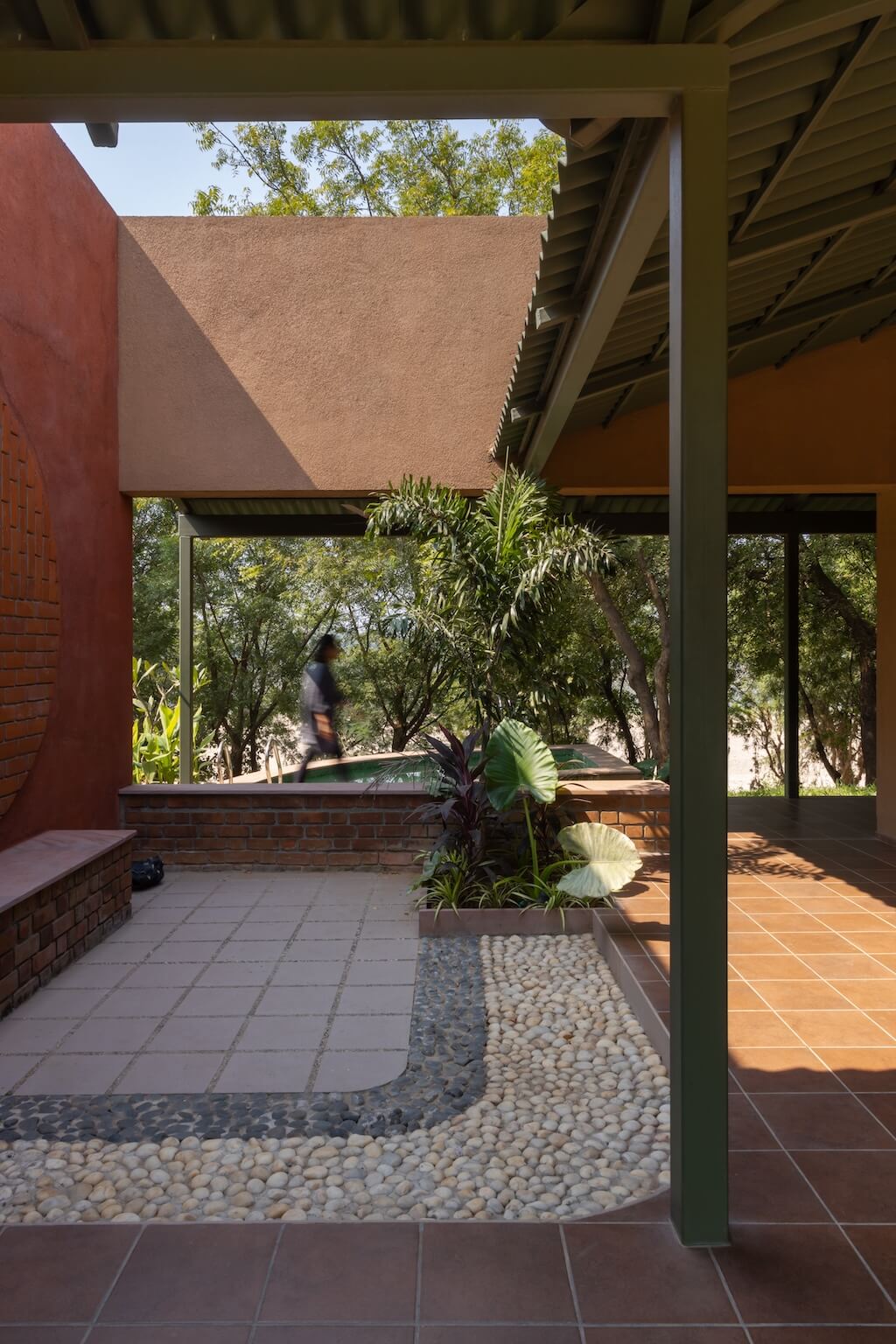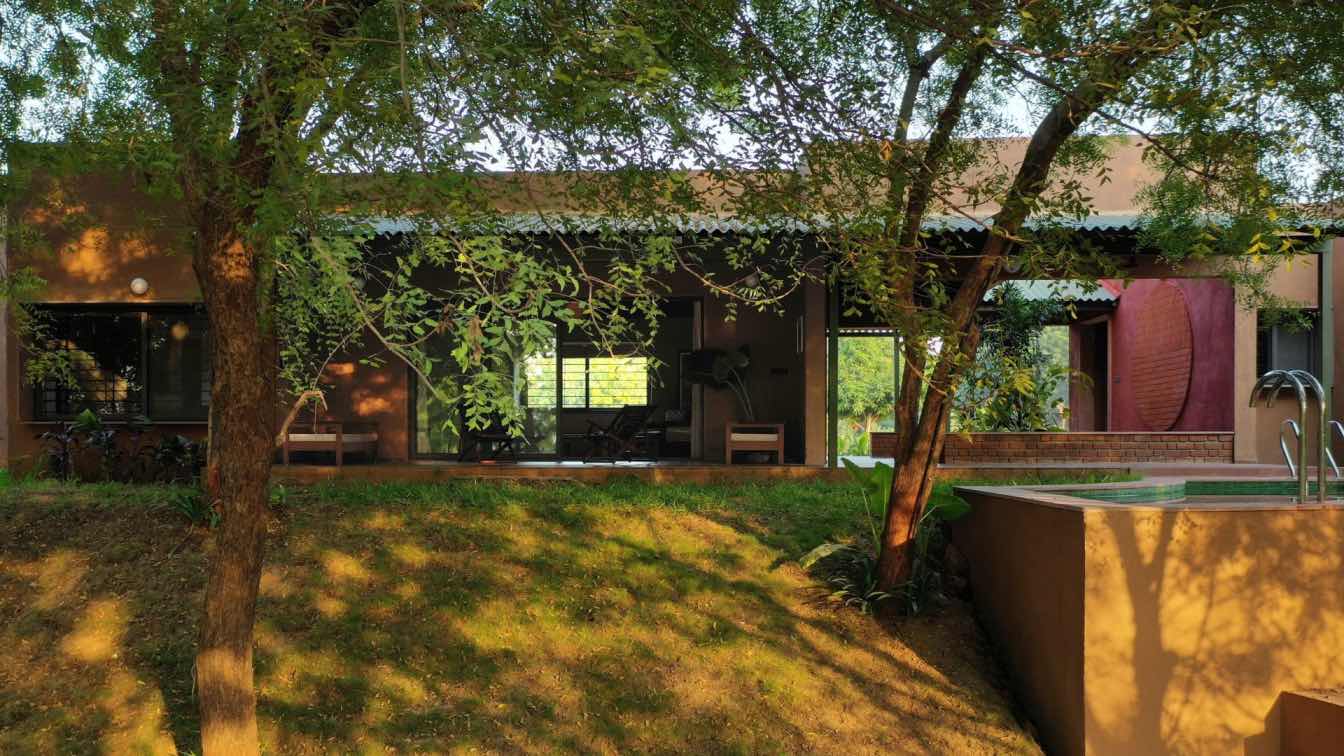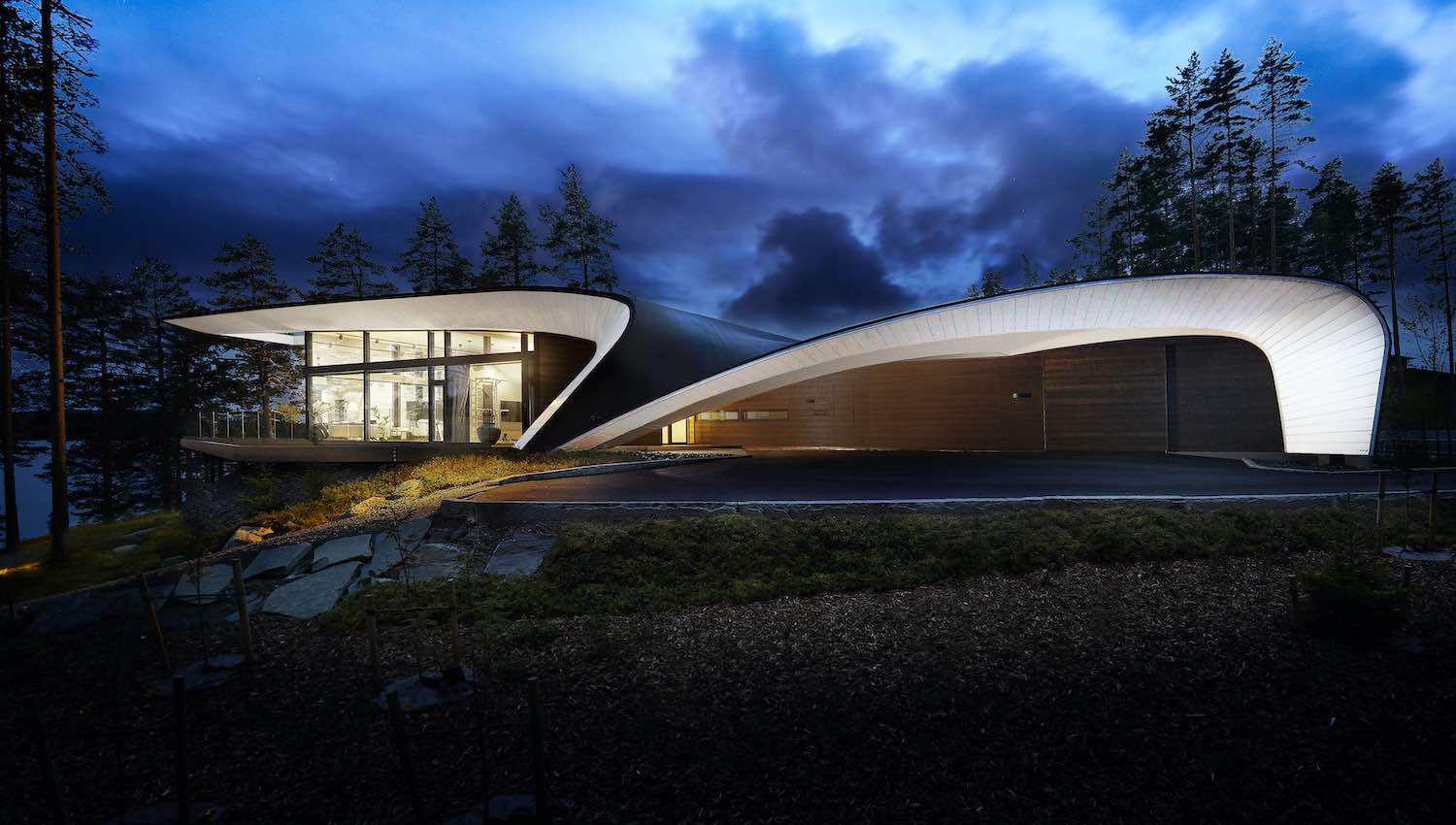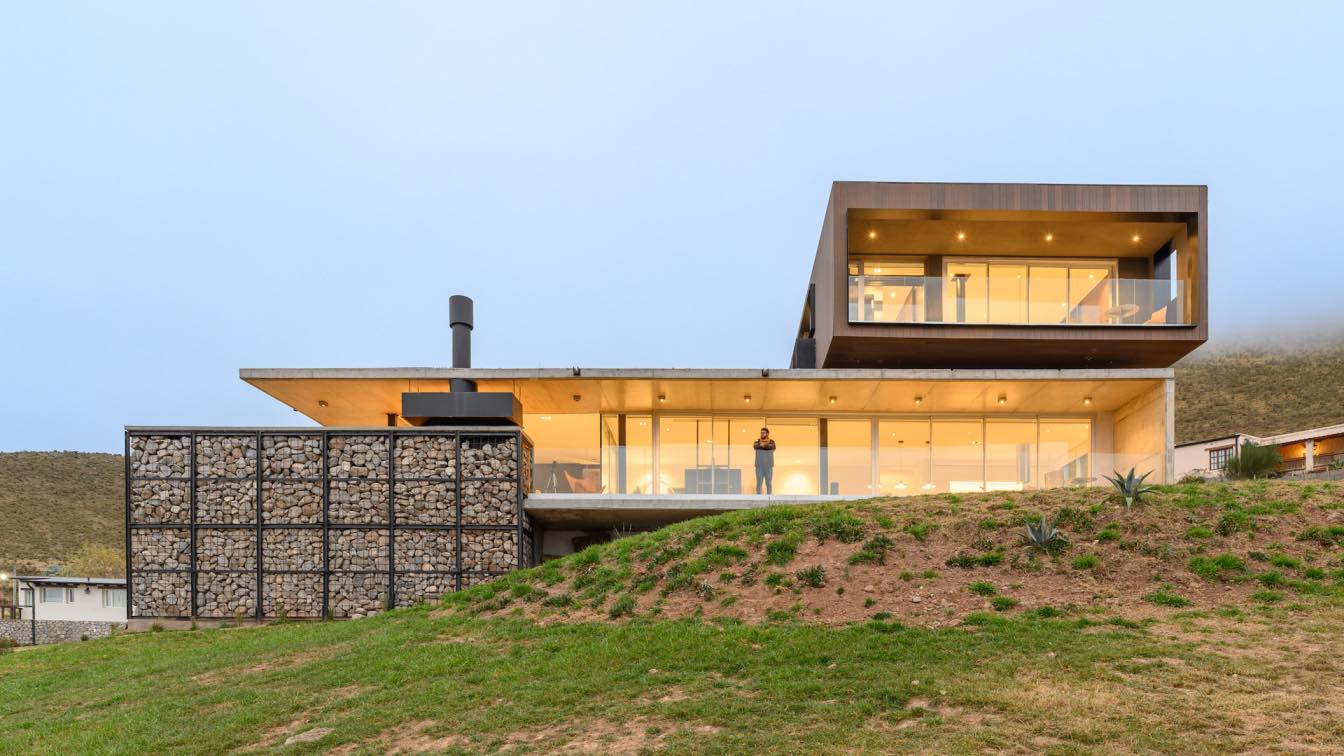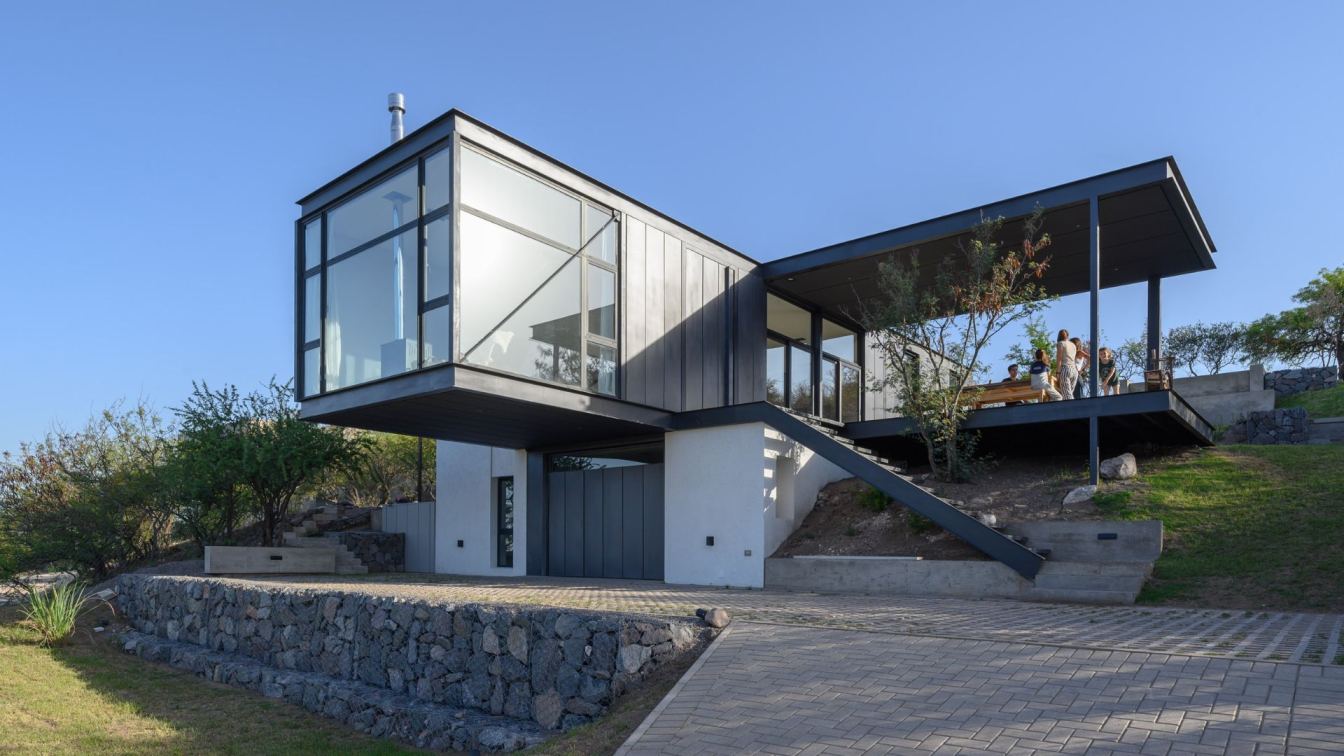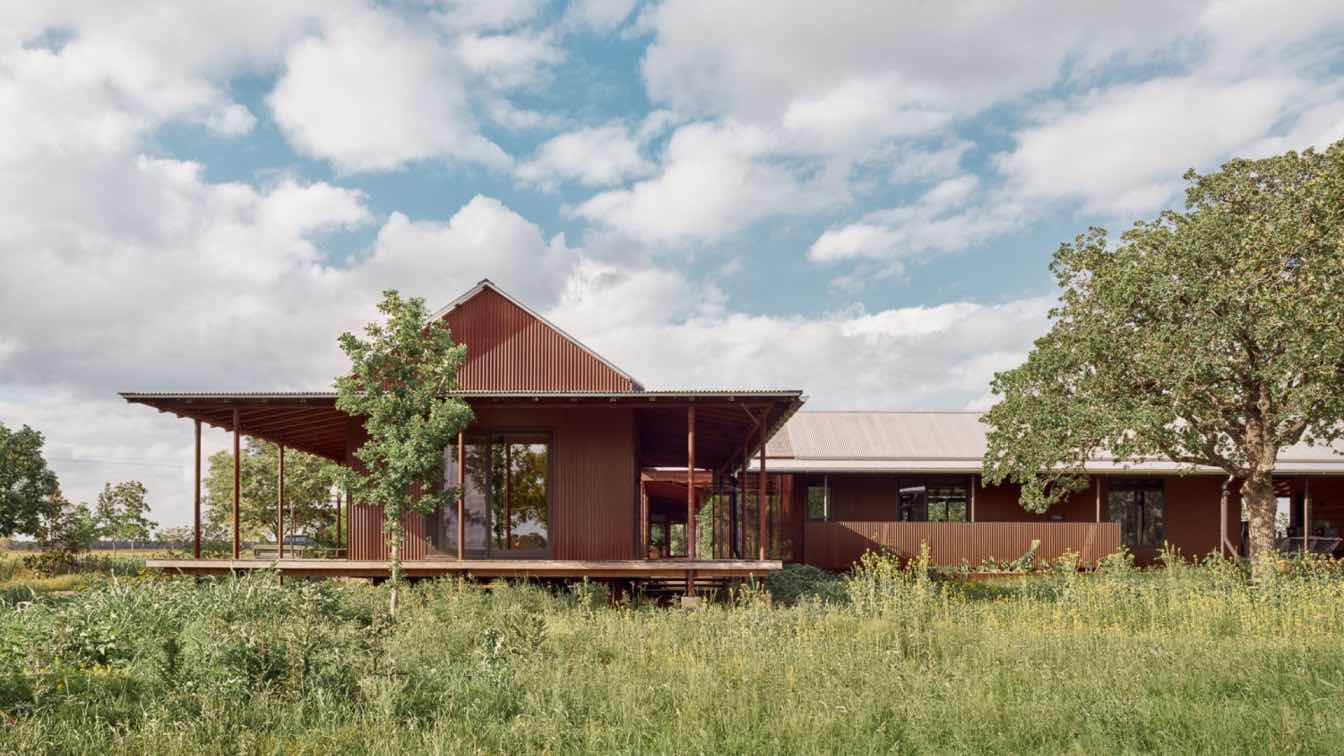Is architecture a part of landscape or vice versa? How can design enhance the sense of Place? In order to consider the building in question, the foremost impression is that it contributes to the overall identity and character of the site. Contextual architecture seeks to create buildings that feel like a natural extension of their surroundings, enhancing the aesthetic and functional value of a place. It is an approach to design that considers the surrounding environment, culture, and historical context of a building's location. The goal is to create structures that harmonize with their surroundings and complement the existing landscape and built environment.
The architectural design of a 2 lakh square foot farmland on the edge of the Mahi River in Vadodara, Gujarat, too embodies a melodic blend of functionality and aesthetics. The riverbank house, owned by a couple, have a keen interest in farming. The property features an extensive array of plantations including guava, teak, castor oil, and dragon fruit. The farmhouse is situated on a hill engulfed by these plantations, overlooking the riverbank, with neem trees lining the riverbank view and offering natural shade and scenic views. With every vista, one is taken in by the greens and the secluding feeling of being in nature.
The initial plan was to construct a conventional space for farming activities and stay, but over time, the design ideation evolved into a comprehensive two-bedroom house with a pool. Despite this evolution, the attempt to not occupy an overpowering architectural area is significantly visible, emphasizing the importance of maintaining a natural, open environment. Apeksha Ray, the principal architect of Studio DesignSeed, based in Vadodara, says it’s a courtyard with a house and not the other way round. It is said in a literal as well as metaphorical manner. It is a design choice that prioritizes outdoor spaces, making them the primary focus of the property. The courtyard serves multiple purposes: it provides natural light, ventilation, and space for relaxation and contemplation. The brick lined circular form on the wall sort of becomes a focal point. The glimpses of brick are evident in quite some elements that tie the whole theme of material palette together.

The architectural form aligns with the river, creating a sense of axiality and directionality. The overall aesthetic is raw and organic, highlighting the natural elements of the site. Reusing site materials, such as incorporating river pebbles from the bank, demonstrates the architect's dedication to sustainable design. These pebbles are creatively repurposed for key features, including the shower wall adjacent to the pool and the courtyard flooring. Studio DesignSeed places a strong emphasis on hand sketching as a crucial part of the process, while digital software serves as a facilitator in achieving the final outcome. This enables to create spatial experience with each stroke while traversing through each corner of the space.
The entrance to the house features an open layout with seating facing the courtyard. The courtyard divides the house into two sections: the right side includes public areas such as the living room, dining space, and kitchen pantry, while the left side houses the private areas with bedrooms and bathrooms. Large bay windows in the living room extend into a semi-outdoor passage that overlooks the neem trees and river. This design choice allows residents to fully immerse themselves in the surrounding nature. The living room features Kota stone flooring, providing a seamless flow between the indoors and outdoors, while also highlighting the surrounding views. The volume and scale of the built form create a sense of being outside, reinforcing the architect's goal of achieving a "grounded" feeling for the farmhouse rather than a typical leisure weekend house. The arched ceiling lined with brickwork adds character to the interior, while fabricated roofing in the outdoor spaces blends with the green landscape.

The walls of the courtyard are finished with a mix of plaster and rice husk highlighting the studio’s innovative ways with natural materials, resulting in a textured surface that complements the earthy colour palette. This combination is used throughout the property. From the courtyard, the infinity-edge pool offers an uninterrupted view of the lush green neem trees, enhancing the overall visual experience of the house. The master bathroom space is directed away and towards the river view yet again incorporating green mosaics and terracotta colours to create a cohesive aesthetic. The custom- designed furniture and lamps, as well as the use of commissioned artworks, further emphasize the architect's dedication to showcasing the craftsmanship. In summary, the architectural design of the farmhouse is enveloped by nature which results in an inviting retreat that celebrates the beauty of its natural surroundings and sustainability. The design choices prioritize outdoor spaces and the surrounding environment, creating a living space that is both practical and serene.
This design project prioritizes harmony with the natural environment and historical context of a site. By integrating the building with its surroundings, the architect aims to preserve the landscape's ecological integrity and beauty. This approach also emphasizes the significance of anything ‘local’, materials, and design aesthetics, celebrating and safeguarding the natural heritage of the area. Contextual design not only creates spaces that resonate with the people who use them but also enriches the identity and legacy of a place.


